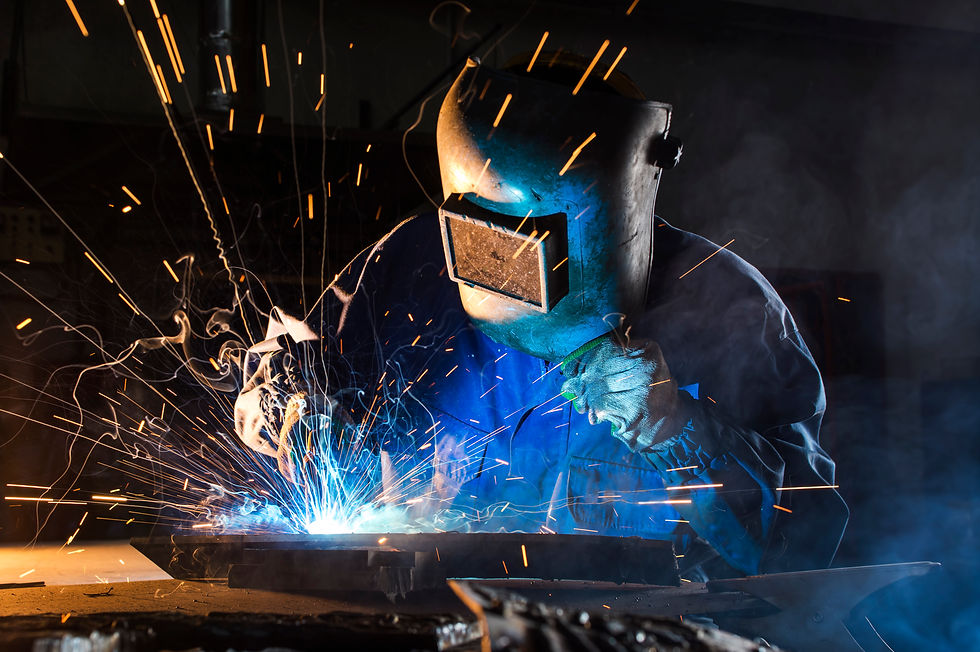MIG or TIG? Choosing the Right One for the Right Job
- Rosie

- Oct 25, 2021
- 1 min read

MIG, TIG, Stick, MMA, GMAW, GTAW. With so many welding processes out there, it can get tricky figuring out which one to use for your project.
In this blog, we’ll be discussing the differences between the two most common processes, TIG and MIG, and detailing when to use them.
MIG
Metal Inert Gas welding, or MIG welding, uses a wire electrode on a spool that is fed through on a user selected speed.
The welding arc is generated by an electrical current that runs through the base metal and the wire, which then melts the wire and welds it to the base, creating a strong and aesthetically pleasing weld.
MIG welding is best used on metals such as:
Steel,
Stainless steel, and
Aluminium alloys.
MIG welding is the best choice for beginner welders as it affords the user better control when used on thinner metals, and provides a high quality, clean finish.
TIG
Also known as Tungsten Inert Gas welding, TIG welding is better suited to more experienced welders and gives the user a higher degree of control over the weld, but it is significantly slower than other processes.
TIG welding can be used on a wide variety of metals, including:
Steel,
Stainless steel,
Aluminium alloys,
Chromoly,
Copper
Brass,
Magnesium, and
Titanium.
RentArc and Your Welding Needs
At RentArc, we have a wide range of hire packages, including comprehensive TIG and MIG packages from leading brands such as Miller, Kemppi and Lincoln.
If you’re looking for a particular bit of kit, why not call us today on +44 (0)23 80 867 789 or email us at info@rentarc.com.

